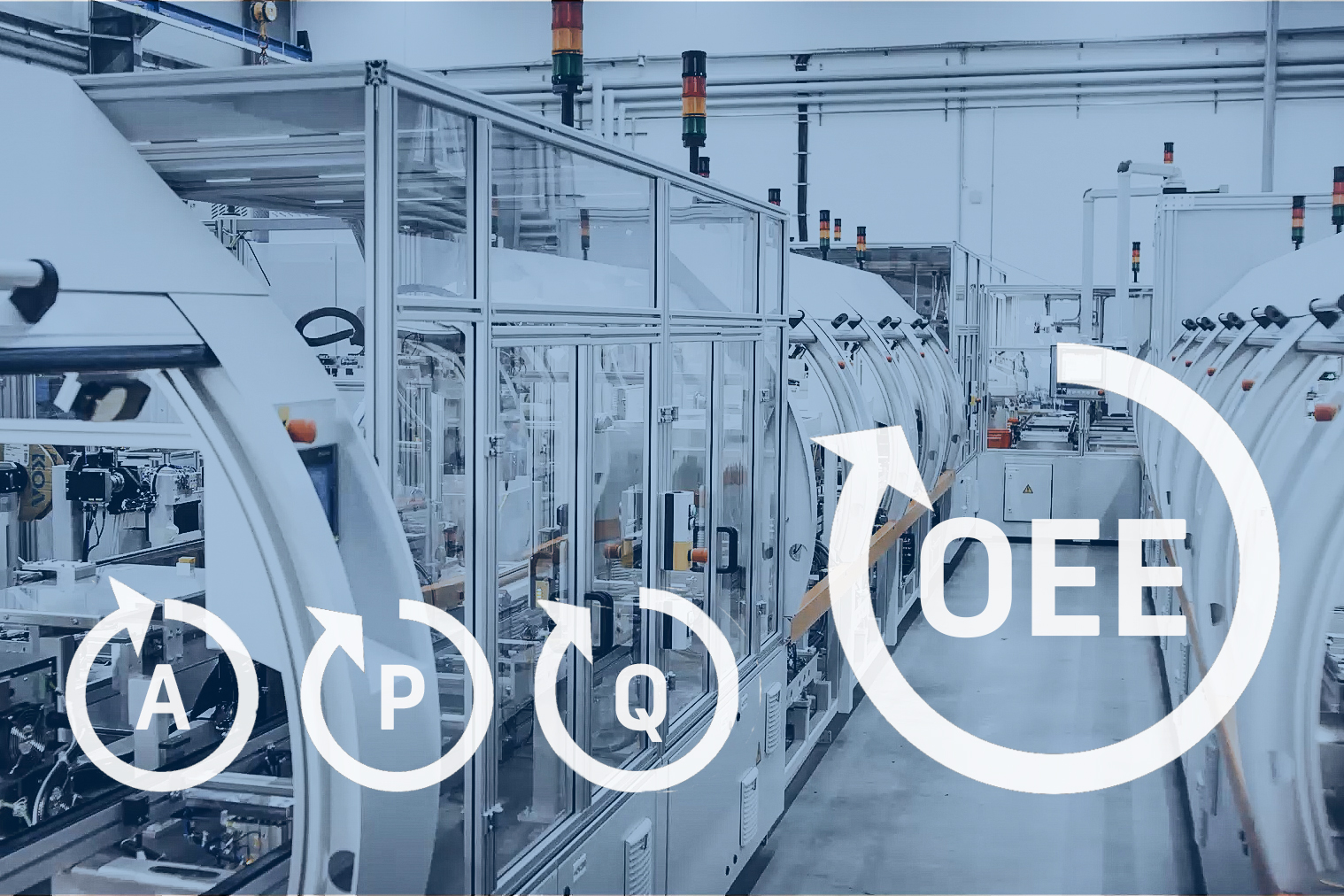The OEE value is made up of the following three factors:
- Availability
- Performance
- Quality
Optimization of the Overall Equipment Effectiveness

In order to increase the availability of the system, we pay attention to fail-safe solutions when integrating all individual components and we install quickly replaceable wear parts. Redundant material feeds ensure that in the event of a failure of an individual system, the process can still continue and thus production can run on. An intelligent arrangement of the maintenance area optimizes the accessibility, which ensures a quick possibility of troubleshooting. In order to generally avoid unplanned downtimes, the service technicians from AKE technologies rely on Maintenance 4.0. An analysis tool independently monitors the condition of the entire system, the individual processes and the installed components. Problem reports and recommendations for action are automatically passed on to the operator.
Next, the aspect of system performance is taken into account when planning the system. To this end, micro-malfunctions, a shortage of parts and rigid system interlinking must be avoided. Workers‘ workplaces are not only assessed in terms of ergonomics - the workers' reach and walking distances are minimized and insertion processes are designed sensibly. We ensure that worker activities are decoupled by avoiding direct input into cycle time-bound systems. Intelligent logistics are also considered within the automated production process. Buffer systems or parallel stations are used in critical bottlenecks to avoid unnecessary delays. A buffer for subsequent processing steps is also generated through intelligent cycle times in pre-assembly and in upstream test processes. Thus, the influence of N.I.O. components to the overall production is kept as low as possible. In addition, the automation experts at AKE work out emergency concepts in which a redundant design of process-relevant components is ensured.
Last but not least, the "OK" parts produced in a system are decisive. Quality losses arise, among other things, from component tolerances or tool wear. To increase the quality of the components produced, camera-based joining processes are used to compensate for component tolerances. In addition, the integrated production processes automatically adapt to current conditions, for example on the basis of torque tests. Integrated dummy tests and tool tests for the independent control of measuring systems complete the solution approaches to increase component quality.
With the OEE key figures, individual system sectors can be analyzed, problem areas identified and optimization paths developed in order to increase productivity. For us as automation experts, the OEE is therefore a decisive tool for continuously refining our system technology.
Are you looking for an automation expert for your production?
> Please contact us!




